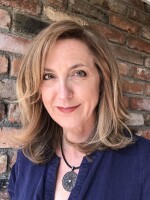The fact that prostitution is legal in some parts of Nevada remains a source of controversy both inside and outside the state. Although it’s not allowed in Washoe County today, the city of Reno has been more permissive in the past.
Reno’s red-light district sprung up on the town’s more industrial east side, and was pretty much left alone by the authorities through the 19th century. But the community’s tolerance began to taper off after 1900. That’s when progressive reformers launched a “red light abatement” campaign that found an ally in Mayor Harry Stewart.
In 1923, he declared the red-light district closed in an executive order that was formalized by the city council. But just a few months later, the citizens of Reno elected a new mayor, the more freewheeling Edwin E. Roberts, who helped push through an amendment that allowed the brothels to remain as long as they were 250 feet away from any public street or alley.
As Reno native Paul Leonard recalled in a 1980 interview, that move basically sanctioned their open operation.
“In the late twenties, when I was in high school, Reno, of course, was really a pretty wide-open type of town. The three big houses of prostitution were the Stockade, the Green Lantern, and the Mohawk,” said Leonard.
The largest and most notorious was the Stockade, located on the site of what is now Greater Nevada Field. It got its name from a tall wooden fence at its entrance. Behind that were two rows of small rooms known as cribs, 25 on each side, with a dance hall at the far end. Up to three shifts of women per day rented the cribs, registered with the police and underwent regular medical screenings. Its visibility shocked many visitors, but residents tended to take it all in stride.
“As youngsters, we would go down there once in a while, and walk up and down the Stockade, and the girls would all laugh at us,” Leonard said.
Everything changed during World War II, when the Reno Army Air Base was established just north of town in what is now Stead. In 1942, the federal government warned that the entire city of Reno would be declared off-limits to all servicemen unless its brothels were shut down immediately. The threat worked, and within months, the Stockade and all the others were forced to close their doors.
Still, brothels were not officially prohibited, a loophole that was tested in 1948, when the district attorney ordered a would-be madam named Mae Cunningham to close a brothel she had just opened on Reno’s Commercial Row. She appealed her case all the way up to the Nevada Supreme Court, which ruled in 1949 that brothels could legally be outlawed by city ordinance as a public nuisance, even if brothels themselves were not technically illegal.
At that point, it was up to the local jurisdictions to decide, and in 1971, the Storey County Commission exercised that right by granting a business license to Joe Conforte’s Mustang Ranch, which then became Nevada’s first legally operated brothel. That same year, Nevada passed a law prohibiting brothels in Clark County, which is still the law today. All the other counties can decide for themselves. And, of course, outside of licensed and regulated brothels, prostitution remains illegal statewide, as it is throughout the country.
Historian Alicia Barber is the editor of the website and smart phone app RenoHistorical.org. Oral history clips for this segment were provided by the Special Collections Department of the University of Nevada, Reno Libraries.






